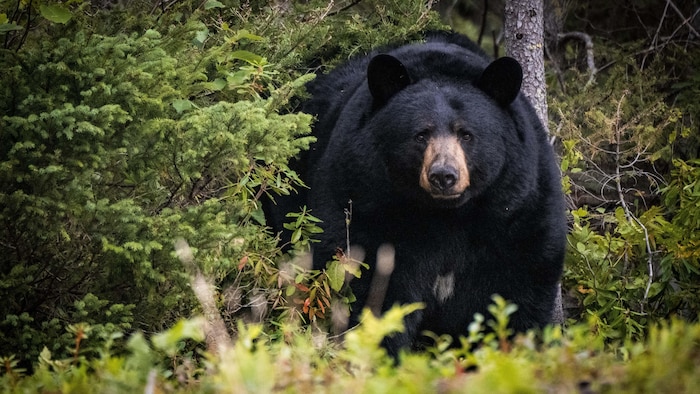Open full screen Pacific Wild, a non-profit organization, wants the province's conservation officers to are equipped with intervention cameras. (Archive photo) Radio-Canada Speech synthesis, based on artificial intelligence, makes it possible to generate spoken text from written text. After the recent deaths of two young black bears, animal advocates reignite debate over B.C. conservation officers wearing body cameras. In 2019, Pacific Wild, a non-profit organization focused on wildlife conservation, previously petitioned the Ministry of Environment and Climate Change Strategy to require wildlife officers to conservation carry an intervention camera. That year, more than 500 bears were shot. Today, the organization renews its call, after 2023 saw a record 603 bears killed by the BC Conservation Officer Service, according to online statistics of the province. Mollie Cameron, a wildlife specialist with the organization, says she is concerned about the decision-making process followed by officers conservation when deciding whether or not a bear cub is eligible for rehabilitation. Many conservation officers work independently and in rural and forest environments. Using cameras can create that accountability and transparency, and support the decisions they've made, says Mollie Cameron. Loading ELSEWHERE ON NEWS: Asylum seekers: the bill has ballooned, Quebec is now demanding $1 billion from Ottawa The latter highlights two recent incidents. The first occurred in December, when an injured bear cub found near Buckley Bay on Vancouver Island was euthanized. The cub was described by the conservation service as emaciated and too weak to survive. The second incident occurred on January 15, when a young bear found in Nelson, British Columbia, was also euthanized. The bear was in poor health, according to agents who consulted wildlife biologists.
Asylum seekers: the bill has ballooned, Quebec is now demanding $1B from Ottawa
Online statistics from the provincial government show 6 black bear cubs were placed in centers last year, about three times more than in 2013. (File photo)
We believe that a proper assessment by a qualified veterinarian with medical experience is crucial in determining whether or not the cubs are suitable for rehabilitation, explains Mollie Cameron.
Len Butler, deputy head of the conservation service, said he had no objection to the surveillance cameras. We would have no problem with these cameras because we are confident in our abilities to make decisions and justify them, he argues.
Len Butler estimates the department receives about 27,000 calls a year about black bears through the Report Poaching or Pollution (RAPP) line, and their primary concern is public safety.
When assessing the health of wildlife, Len Butler explains that conservation officers consult a wildlife biologist and a veterinarian if possible.
He adds they also follow guidelines based on feedback from wildlife biologists and the provincial wildlife veterinarian. The latter, according to the Ministry of Environment and Climate Change Strategy, provides training in the safe handling, care and euthanasia of wild animals.
< p class="StyledBodyHtmlParagraph-sc-48221190-4 hnvfyV">When a conservation officer decides to euthanize an animal to end its suffering, they are doing so based on sound reasoning, says Len Butler.
Do we like doing this? Absolutely not, he assures.
Regarding the bear cub euthanized on Vancouver Island in December, Len Butler explains that officers made the decision that time to put the bear down and we are confident about that. It's not because of a lack of training, the training is there, the experience is there.
He insists that wildlife rehabilitation centers only take in cubs and that Nelson's bear was about two years old, emaciated and wandering into town in search of enticements. , such as food.
Then there is risk assessment, he adds. It's easy to focus on eliminating bears, but not on the problem.
Adam Ford, associate professor of biology at the University of British Columbia Okanagan and Canada Research Chair in Wildlife Restoration Ecology, believes intervention cameras will have no effect.
We should instead ask ourselves how to coexist with black bears, he advises. People need to better manage the use of bear attractants and their interactions with bears if they want to coexist.
Adam Ford explains that more black bear cubs have been placed in rehabilitation centers in recent years.
Online statistics from provincial government shows 61 black bear cubs were placed in centers last year, about three times more than in 2013.
If we want officers to take actions that lead to greater rehabilitation [of bears], then we need to advocate not for cameras, but for facilities that allow officers to have that option, says Adam Ford.
With information from Michelle Morton

